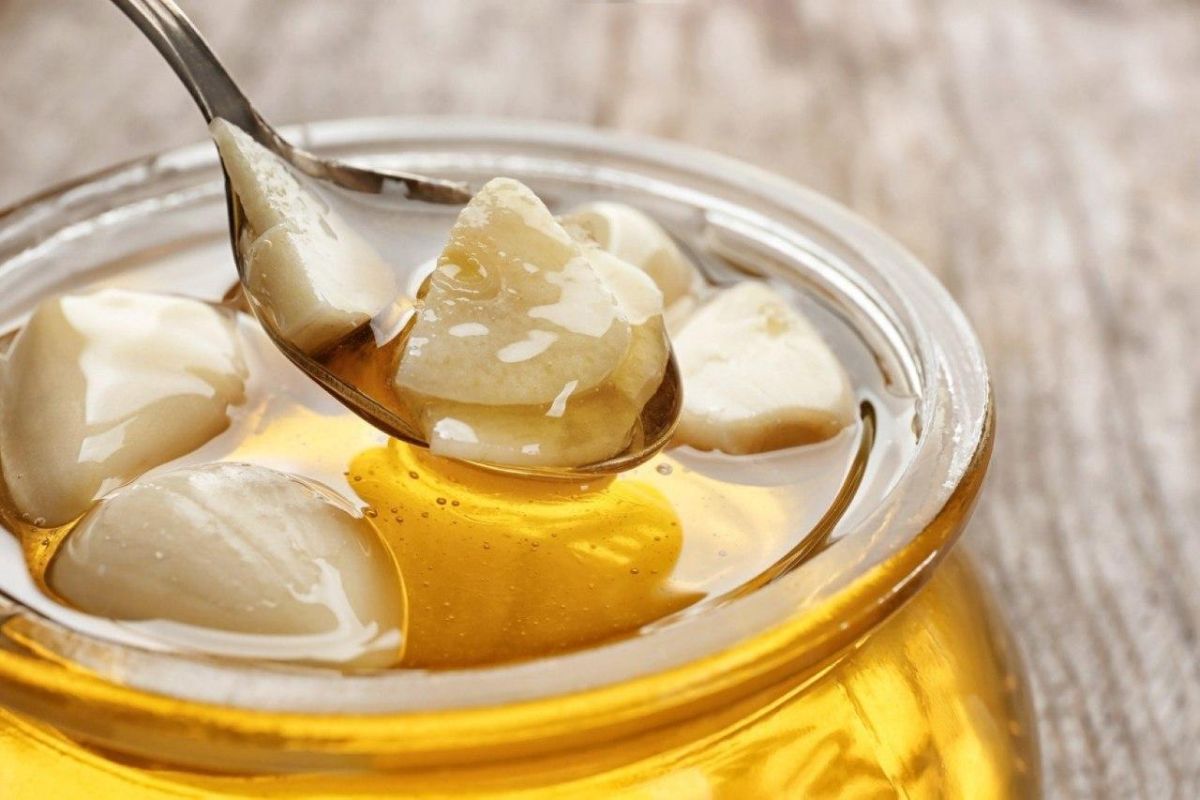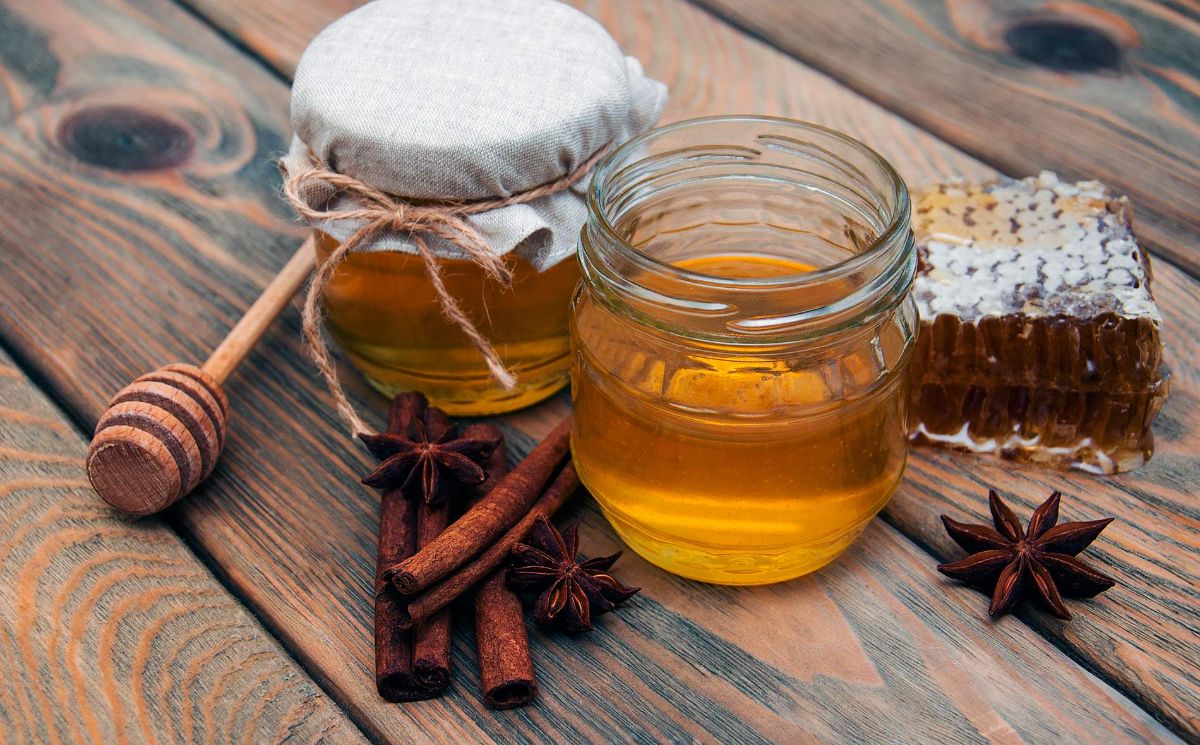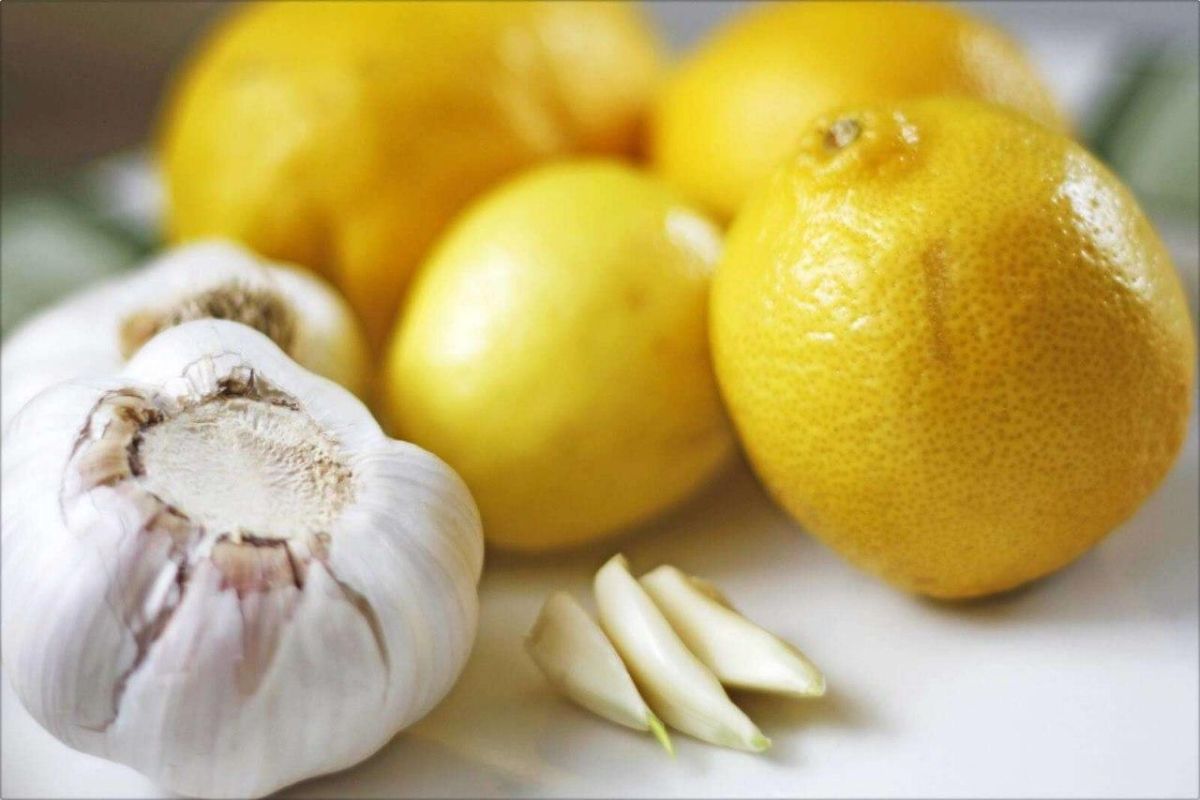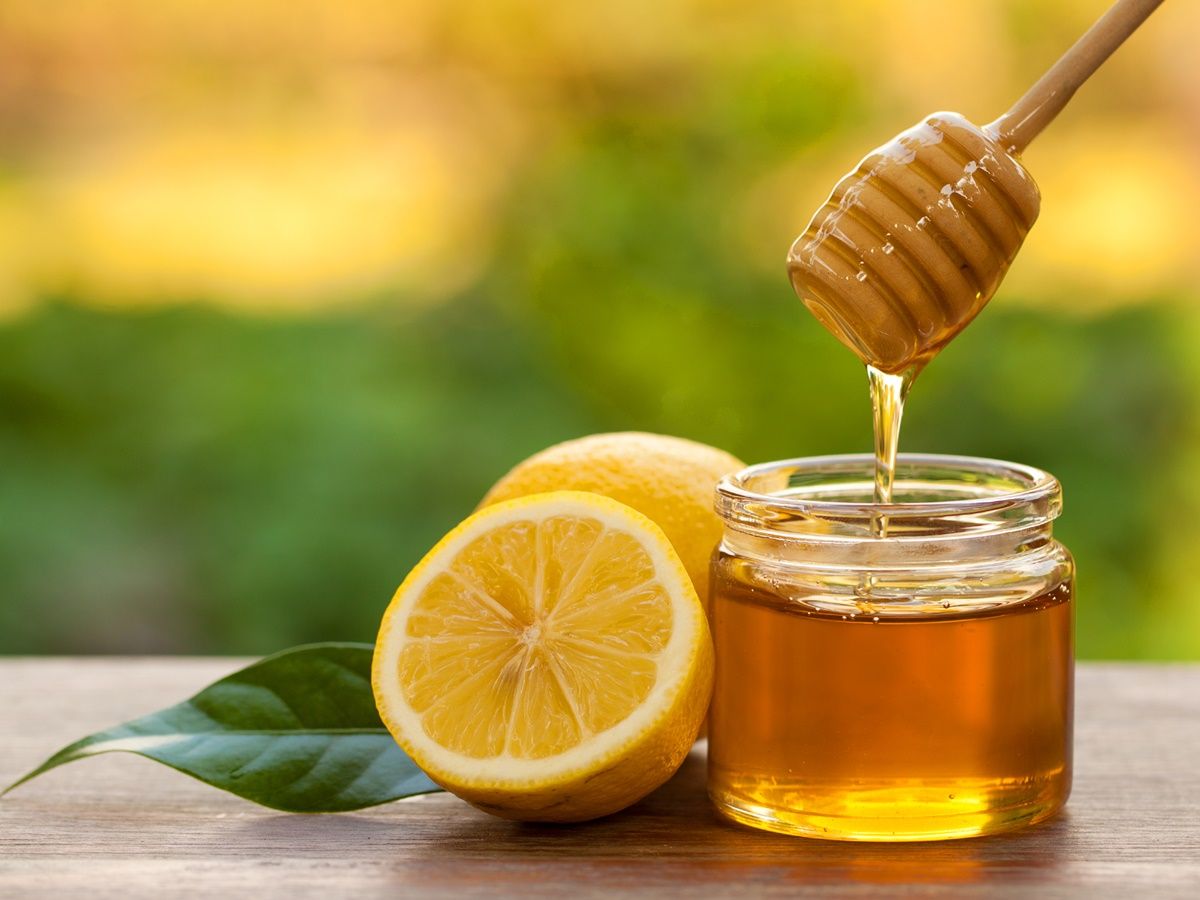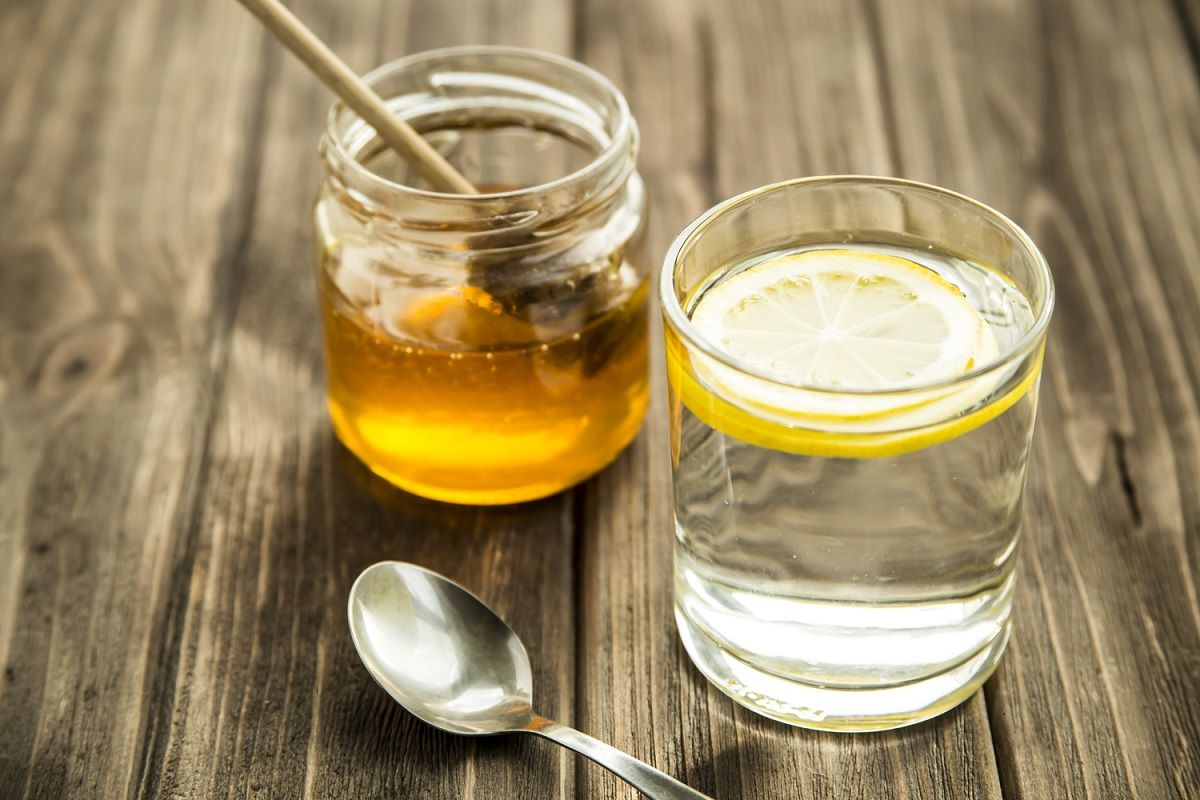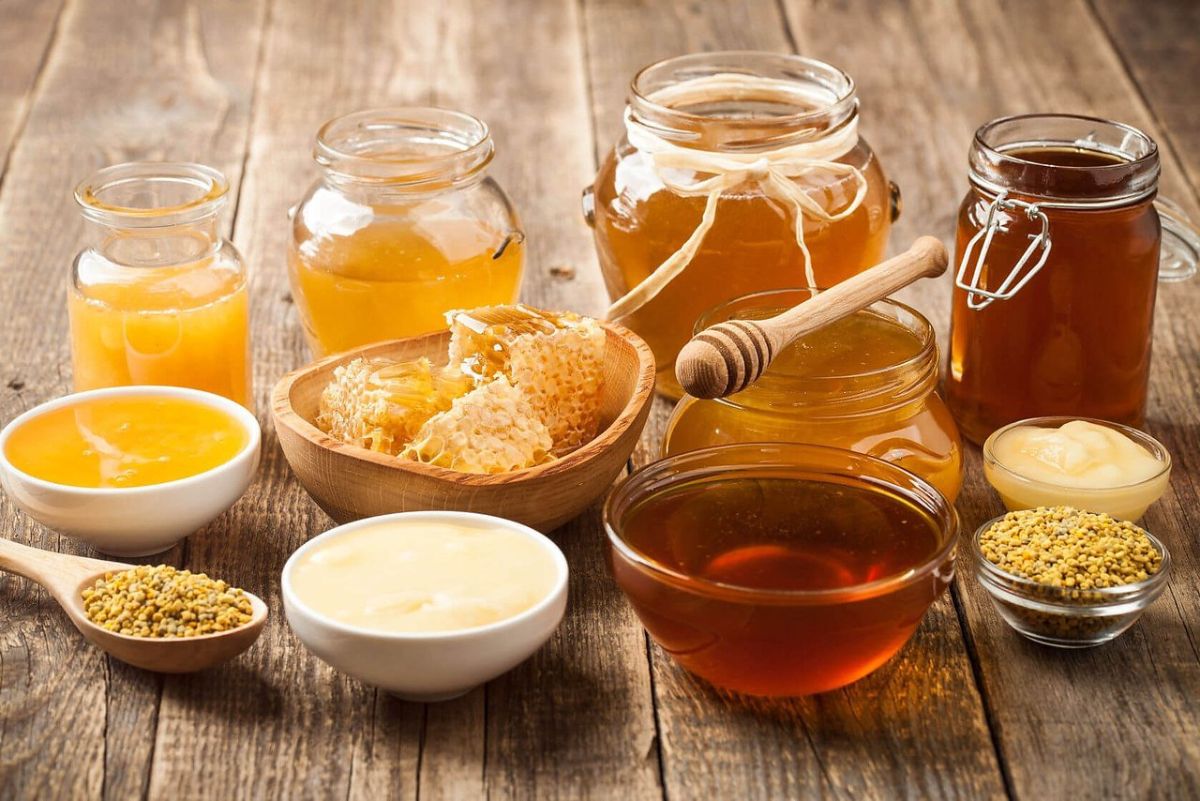What is useful for honey in honeycombs — 5 proven properties and how to use it
Eating honeycomb can bring additional health benefits compared to pure honey. Their effect is multifaceted: from cough relief to prevention of tumor formation.
However, this method of taking honey also carries certain risks for humans. Let's look into it in more detail.
Content
What is it?
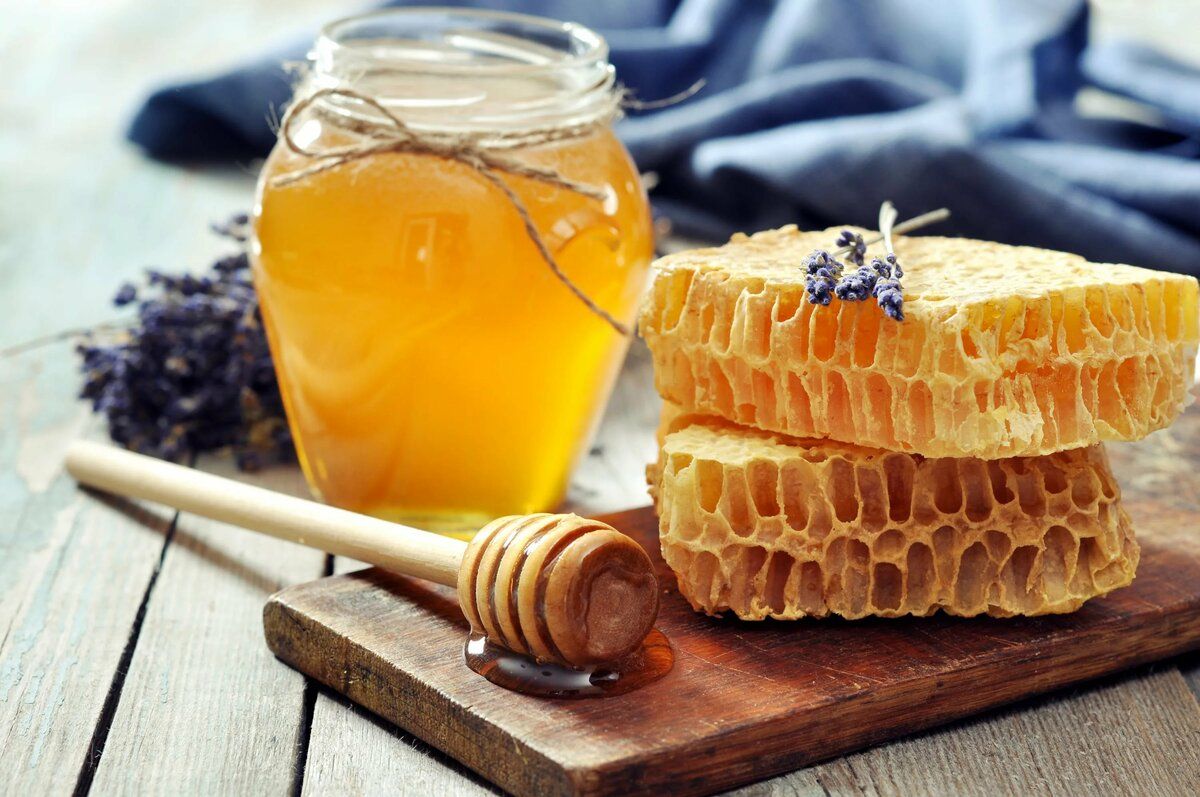
Honeycombs (also called zabrus) are wax constructions of bees that contain honey and perga (plant pollen glued together by the secret of bees). As a rule, honeycombs consist of equilateral hexagonal prismatic cells located on both sides of the common mediastinum.
Insects produce wax for the construction of honeycombs independently through the glands of external secretion. Then special granules are placed on the bottom – parchment, and the rest of the cell is filled with honey. After harvesting the stocks, the bees hermetically seal each cell with a wax plate.
Honeycomb honey is a pristine beekeeping product that has not been subjected to heat or chemical treatment. It almost never spoils or gets candied. It is this kind of honey that is considered the most valuable from a biological point of view and beneficial to health.
In the absence of contraindications, you can use honeycomb with honey in its entirety. All components must be consumed.
6 medicinal properties
Modern scientific research confirms the beneficial properties of honey in honeycombs. Let's look at them in more detail.
1. Has a rich composition
 Honeycombs are rich in valuable carbohydrates and antioxidants. The main component (honey) is almost 95-99 % consists of
made of sugars and water, contains small amounts of vitamins and minerals, but huge amounts of antioxidant substances.
Honeycombs are rich in valuable carbohydrates and antioxidants. The main component (honey) is almost 95-99 % consists of
made of sugars and water, contains small amounts of vitamins and minerals, but huge amounts of antioxidant substances.
Raw honey is saturated with enzymes produced by bees (for example, glucose oxidase), which have a pronounced antibacterial effect and can be effective in preventing and alleviating infectious and inflammatory diseases.
"Commercial" forms, as well as melted honey, do not contain enzymes, since any heat treatment leads to their destruction. Similar information lead scientists from Iran.
The main advantage of honeycomb honey is the abundance of antioxidants. They increase the adaptive capabilities of the body, obstruct the development of tumors and a wide range of diseases from the cardiovascular and digestive systems.
For example, experts from Malaysia claim that antioxidants can protect against hypertension and atherosclerosis.
Chinese specialists discovered the ability of antioxidant substances of honey (phenolic acids, stilbens, lignans and flavonoids) to provide cancer prevention.
Honeycomb honey is rich in antioxidants and can be effective in preventing intestinal, heart and vascular diseases, as well as infectious, inflammatory and malignant pathologies.
2. Improves the health of the heart and blood vessels
 Honeycombs with honey have great benefits for the health of the heart and blood vessels.
Honeycombs with honey have great benefits for the health of the heart and blood vessels.
According to research data, completed by American experts, beeswax contains fatty acids and alcohols with a long chain, which can reduce the level of total and atherogenic (LDL, TAG) cholesterol, increase the concentration of "useful" cholesterol (HDL) in the blood.
The use of the product warns the appearance of cholesterol plaques on the walls of arteries and the development of a large number of diseases (coronary heart disease, myocardial infarction, strokes).
Malaysian scientists have discovered the ability of antioxidants to cause relaxation of smooth muscle cells in the walls of arteries (including coronary arteries). As a result, the blood pressure level decreases and the frequency and severity of seizures in coronary heart disease decreases.
Regular consumption of honeycomb honey is associated with a low risk of blood clots in vascular lumen and, as a result, the rare occurrence of strokes and myocardial infarction.
3. Has antibacterial effect
 Akintola University staff (Nigeria) discovered
that such honey increases the human body's resistance to many infectious agents (bacteria and fungi).
Akintola University staff (Nigeria) discovered
that such honey increases the human body's resistance to many infectious agents (bacteria and fungi).
The product inhibits the growth and reproduction of more than 60 species of bacteria (gram-positive and gram-negative, aerobic and anaerobic), as well as some yeasts and fungi (aspergella, penicillin).
Italian scientists emphasize Beeswax is particularly effective against Staphylococcus aureus, Candida fungus, Salmonella and E. coli. It is these microorganisms that often cause infections of the upper respiratory tract, intestines and oral cavity.
Honey also activates the immune system , which in some cases makes it possible to completely exclude the ingress and subsequent reproduction of pathogenic representatives of the external environment.
4. Fights cough in children
 Research conducted at the Children's Hospital in Colombia, show the ability of fresh honey to suppress coughing (including compulsive) in children.
Research conducted at the Children's Hospital in Colombia, show the ability of fresh honey to suppress coughing (including compulsive) in children.
The product also reduces the severity of pain and discomfort in the throat, improves sleep quality during acute respiratory infections. Taking only ½ teaspoon of honey is more effective than the most common medicines produced in the form of syrups.
Honeycombs also contain antioxidants that reduce the severity of irritation of the upper respiratory tract and facilitate the course of pathologies that cause coughing.
However, honey may contain clostridium spores that secrete botulinum toxins. It is extremely dangerous and contraindicated in children under the age of 12 months.
5. Improves the course of diabetes mellitus
 Honeycomb honey is a great alternative to the usual sugar for people suffering from type II diabetes mellitus.
Honeycomb honey is a great alternative to the usual sugar for people suffering from type II diabetes mellitus.
According to scientists from Iran, honey is slower increases the concentration of glucose in the blood after consumption is higher than refined sugar.
Alcohols included in the wax can increase the sensitivity of insulin receptors on muscle and adipose tissue cells to insulin, which accelerates the capture and utilization of sugar from the blood.
The inclusion of honey in honeycombs in the diet of people with diabetes allows you to prevent the development of complications from the cardiovascular and central nervous systems, reduce body weight (despite the high calorie content) and improve the cognitive sphere (memory, attention, thinking).
6. Supports liver function
 Employees of the National Center for Scientific Research (Cuba) claim
that beeswax is able to provide prevention of fatty liver hepatosis (found in type II diabetes mellitus and obesity).
Employees of the National Center for Scientific Research (Cuba) claim
that beeswax is able to provide prevention of fatty liver hepatosis (found in type II diabetes mellitus and obesity).
Wax can also reduce the severity of some symptoms of liver damage (pain in the right hypochondrium, nausea and vomiting, bloating).
Honey also stimulates the excretion of bile, prevents its stagnation in the biliary tract. It can be used as a means of preventing cholecystitis.
Possible harm
 Unfortunately, cellular honey can be harmful to health. Side effects of the product include:
Unfortunately, cellular honey can be harmful to health. Side effects of the product include:
- Intoxication. Botulinum toxins secreted by clostridium can accumulate in honey. These substances can cause damage to the central nervous system (up to respiratory arrest) in children under the age of 1 year. Honey is not dangerous for representatives of older age groups.
- Allergic reactions. Honeycomb honey is the strongest allergen. Hypersensitivity to such honey is quite common and is characterized by a severe course (anaphylactic shock, Quincke's edema, etc.). In the presence of allergic pathologies in the anamnesis, the product is contraindicated.
- Increased blood sugar levels. Honey is a more valuable alternative to refined sugar. However, when consumed in excessive amounts, it can cause a sharp jump in the concentration of glucose in the blood, which will worsen the course of diabetes mellitus.
Honey in honeycombs can be consumed during pregnancy (up to 25-30 grams per day). Negative effects on the fetus were not observed in any of the studies.
How do they eat honey in honeycombs?
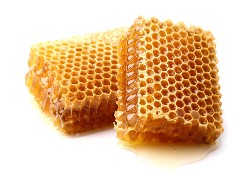 Honeycomb honey can be consumed both whole and separately. However, due to the biological value of honeycombs, it is not recommended to squeeze or pull honey out of them.
Honeycomb honey can be consumed both whole and separately. However, due to the biological value of honeycombs, it is not recommended to squeeze or pull honey out of them.
Honeycombs can be used as a sweetener for any desserts (pancakes, oatmeal, yoghurts and cottage cheese).
Honeycombs also serve as an excellent accompaniment to fruit salads and meat snacks, some fish dishes.
Natural product can be taken as an alternative to sweet dishes (sweets, cakes). It is advisable to bite off a part or cut it into small pieces.
In folk medicine, honeycombs are used as chewing gum for quitting smoking.
It is important to follow the main rules of healthy eating:
- Daily allowance. You can eat up to 80-100 grams of the product per day, for children – no more than 30-50 grams.
- Reception time. Such honey can be eaten at any time of the day, except in the evening. Taking the product on an empty stomach can overload the digestive system and disrupt sleep.
In no case is it recommended to heat or melt honey from the honeycomb. This will lead to the loss of a significant part of antioxidants, vitamins and other valuable nutrients.
Tips for choosing and storing
Let's look at some valuable tips regarding honeycombs:
- Where to buy? Cellular honey is recommended to be purchased directly from beekeepers or their representatives, who are easy to meet at fairs and in branded stores. Industrial versions of the product, as a rule, contain additional chemicals that reduce the volume of medicinal properties.
- How to choose? Honey should be placed in honeycombs that are well sealed. The color of the entire product should be a uniform orange, yellowish or brownish shade. The presence of any spots (white, yellow, black) indicates that the product is affected by a fungus. You should also pay attention to the packaging, where the expiration date and storage rules should be indicated (they should be checked).
- How and how much to store? Honey sealed in cells can be stored for a long time without loss of medicinal properties (up to 5-10 years or more). However, over the years, even in cells, it can become candied (crystallize) and lose organoleptic properties (taste, smell, aroma), but not biologically active substances. Honey collected no more than 2-3 years ago is considered the most valuable. Honey is recommended to be stored in any airtight container (but not in plastic wrap) at a temperature of about 5-13 degrees.
Conclusion
- Thus, the use of honeycombs is associated with many health benefits. It strengthens the immune system, destroys pathogenic bacteria and fungi, and relieves cough symptoms.
- The product can be used for the prevention and treatment of cardiovascular and endocrine disorders, as well as cancer.
- In order to eliminate the development of side effects, it is recommended to carefully choose honey on store shelves and competently approach the inclusion in the food system.
